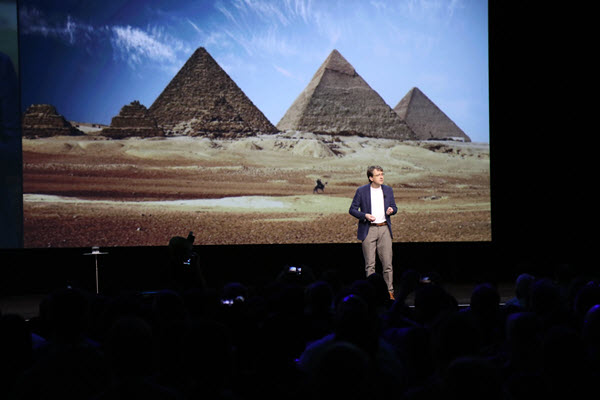Elevate your design and manufacturing processes with Autodesk Fusion
CTO Jeff Kowalski opened up Autodesk University 2016 by sharing that technology is increasing at an exponential rate. This sentiment was apparent at the 2016 conference. As part of an inspiring keynote that touched on virtual reality, artificial intelligence, using design to enact positive change, and empowering the next generation of engineers, Kowalski reassured the group by saying, “ongoing learning is the antidote to fearing, an enabler of using, new technology.” Kowalski wanted to convey that technology is not the competition; the competition is someone else adopting it before we do.

With that mission in hand, we look forward at the future of making things, pioneered with Fusion 360. Autodesk understands that its customers are expecting products that are custom and interactive. That said, the traditional product life cycle paints manufacturers into a corner with an inflexible business process. We are starting to see a big shift to manufacturing that is agile, with products as a service and greater overall lifetime customer value. Some key features of Fusion 360 that support this trend include:
- Fusion 360 is a responsive software. It aligns with the type of devices people want to use, like a tablet on a shop floor, Mac computer, and mobile device. At Autodesk University, the team announced it is making Fusion 360 web-accessible. It will soon be available on any device, at any time, completing the transition to cloud software.
- Fusion 360 has also added an “Ultimate” subscription offering which includes advanced Simulation and CAM capabilities beyond the Standard subscription. It is also remains for students, hobbyists, and startups to continue to ensure CAD is accessible.
- Collaboration is important to the future of design. As a result, branching and merging is coming soon for design options to iterate collaboratively.
- Fusion 360 will also be launching generative design capabilities. This will provide the ability to input constraints and let the software provide possible solutions. The current capability Fusion 360 offers is shape optimization. Soon they will add structural latticing for optimizing designs for additive manufacturing.
For manufacturing companies, how fast you can make an impact is the definition of success. The move to the cloud will allow for rapid iteration, tight communication between a geographically diverse team, innovation, and greater accessibility to engineering software. With these changes however, come challenges associated with the move to the cloud. One being the difficulty for engineers to stay current on rapidly evolving software capabilities. As a response the industry is evolving. Training is now more often seen as ongoing professional development versus a once yearly event.
At the closing keynote, Autodesk CMO Andrew Anagnost commented, “Did you know that after 24 hours, you’ve already forgotten 70% of the new information you’ve gotten from a presentation?” We learned so much at Autodesk University, but the learning can’t stop now that we’ve left Las Vegas. Continuous learning helps defeat that forgetting curve and keep your skills sharp.